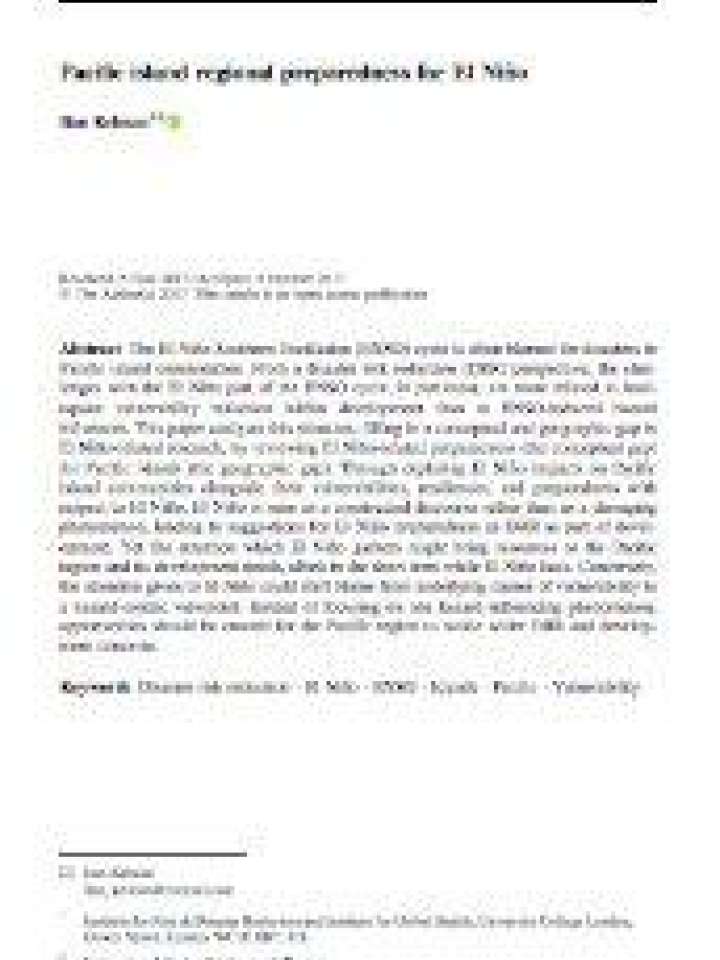Pacific island regional preparedness for El Niño
This paper analyses the situation surrounding vulnerability reduction within development in Pacific island communities. It fills in a conceptual and geographic gap in El Niño-related research, by reviewing El Niño-related preparedness (the conceptual gap) for Pacific islands (the geographic gap). Through exploring El Niño impacts on Pacific island communities alongside their vulnerabilities, resiliences, and preparedness with respect to El Niño, El Niño is seen as a constructed discourse rather than as a damaging phenomenon, leading to suggestions for El Niño preparedness as DRR as part of development. Yet the attention which El Niño garners might bring resources to the Pacific region and its development needs, albeit in the short term while El Niño lasts. Conversely, the attention given to El Niño could shift blame from underlying causes of vulnerability to a hazard-centric viewpoint. Instead of focusing on one hazard-influencing phenomenon, opportunities should be created for the Pacific region to tackle wider DRR and development concerns.
The El Niño Southern Oscillation (ENSO) cycle is often blamed for disasters in Pacific island communities. From a disaster risk reduction (DRR) perspective, the challenges with the El Niño part of the ENSO cycle, in particular, are more related to inadequate vulnerability reduction within development than to ENSO-induced hazard influences.
Explore further
